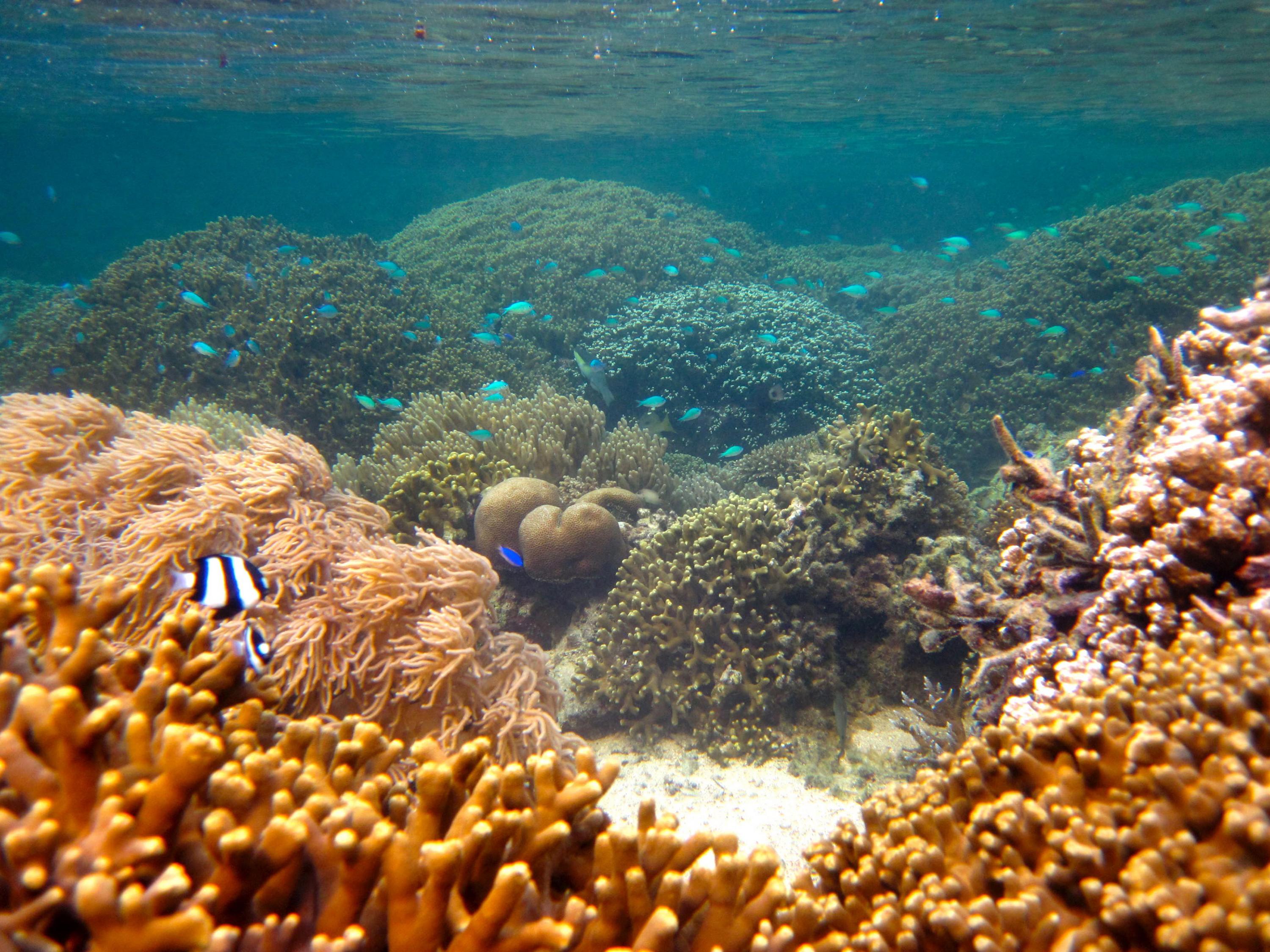For marine protected areas established to help coral reefs recover from overfishing, size really does seem to make a difference.
In a study that may sound a new alarm for endangered corals, researchers have found that small community-based marine protected areas may be especially vulnerable to attack by crown-of-thorns sea stars (Acanthaster species) that can devastate coral reefs. The findings, published this week in the journal PLOS ONE, don’t diminish the importance of protected areas, but point to a new threat that may emerge from the degraded areas that often surround healthy ecosystems.
“The marine protected areas that are enforced in the Fiji Islands are having a remarkable effect,” said Mark Hay, Regents Professor and Harry and Linda Teasley Chair in the School of Biological Sciences at the Georgia Institute of Technology. “The corals and fishes are recovering. But once these marine protected areas are successful, they attract the sea stars which can make the small marine protected areas victims of their own success.”
The research, conducted on marine protected areas in the Fiji Islands, was supported by the National Science Foundation, the National Institutes of Health and the Teasley Endowment at Georgia Tech. The findings conflict with earlier studies that showed diminished sea star threats in large-scale marine protected areas.
“Successful small marine protected areas are like oases in the desert that may attract the sea stars, which can move tens of meters per day from degraded areas into the more pristine areas,” said Cody Clements, a Georgia Tech graduate student who conducted the research. “One of the potential benefits of marine protected areas was supposed to be protection against these outbreaks, but that didn’t seem to be the case in the areas we studied.”
In the Fiji Islands and other areas of the tropical Pacific, many villages have established marine protected areas where the local residents don’t allow fishing. Protecting the fish helps control seaweeds that harm the coral, a foundation species whose presence helps ensure a healthy ecosystem. Enforcing the ban on fishing depends on community support for protecting the reefs, which are part of the local culture – and can provide economic benefits through tourism and spillover of fish to the areas where harvest is allowed.
The impact of the restored reefs goes beyond the recovered areas, which can contribute coral and fish larvae to help repopulate nearby areas.
These sea stars are natural predators that attack coral by climbing onto reefs and turning their stomachs inside out to digest the coral. Large populations of sea stars can rapidly degrade reefs, consuming healthy coral and causing large-scale coral decline in a matter of weeks.
To determine the extent of the problem and learn if the sea stars indeed preferred marine protected areas, Clements studied reefs within and immediately surrounding three marine protected areas on the Coral Coast of the Fiji Islands. First, he conducted a survey to determine population densities of the predators on both protected reefs and fished reefs outside their borders.
The protected areas, Clements found, had as many as 3.4 times as many of the pests as the fished areas, and their densities were high enough to be considered Acanthaster sea star outbreaks.
Next, he tagged 40 sea stars and caged 20 on the eastern and 20 on the western borders of each protected area for two days before releasing them. Clements tracked each sea star, recording whether they had entered the protected or fished areas, and how far they moved into each. Nearly three-quarters of the sea stars entered the marine protected areas rather than the fished areas.
“There seems to be something that is attracting them to the protected areas,” said Clements. “They are picking up on something, but we don’t necessarily know what it is.” The research did not examine chemical cues that may be attracting the sea stars, though other studies have suggested the scent of corals being consumed may draw the crown-of-thorns.
Hay theorizes that the degraded coral reefs may protect the juvenile sea stars, which often hide by day until they reach a certain size. Adult sea stars have poisonous spines to protect them against fish or other potential enemies. Once they reach a certain size, they may move into areas with higher coral density.
Though the small size of the Fijian protected areas – averaging less than a square kilometer – may be a negative for protecting against the sea stars, they could be a positive in efforts to control the pest. Teams of local residents could capture the predators in periodic harvests to keep populations at lower densities, Hay said.
The animals can hide in the reefs, but their feeding habits usually make them visible. “Once you deal with them enough, you don’t have to see them to know where they are,” said Clements. “You can follow the feeding scars they leave on the coral. Where the scar ends, you know you’ll find one nearby.”
The sea stars are a natural part of the tropical Pacific environment, and outbreaks have been known for years. But there is concern that the densities of the pests and number of outbreaks have been increasing at a time when the coral reefs are more vulnerable.
“Reefs are facing many novel stressors today,” said Clements. “They might have been able to tolerate crown-of-thorns attacks in the past that are too much for them now. There are multiple threats facing coral reef ecosystems, and this doesn’t help.”
Coral conservation efforts can require a decade to show results, and Hay hopes the latest threat will not discourage designation of marine protected areas.
“Our findings do not negate the value of the protected areas, but raise an issue of concern to the people who manage them,” he said. “This looks like a threat that could be accelerating, and we wanted to raise the awareness.”
This research was supported by the National Science Foundation under grant OCE- 0929119, by the National Institutes of Health ICBG grant U19TW007401, and the Teasley Endowment to the Georgia Institute of Technology. Any opinions, findings, and conclusions or recommendations expressed in this material are those of the authors and do not necessarily reflect the views of the National Science Foundation or the National Institutes of Health.
CITATION: Cody S. Clements, Mark E. Hay, “Size matters: Predator Outbreaks Threaten Foundation Species in Small Marine Protected Areas,” (PLOS One, 2017). http://dx.doi.org/10.1371/journal.pone.0171569
Research News
Georgia Institute of Technology
177 North Avenue
Atlanta, Georgia 30332-0181 USA
Media Relations Contacts: John Toon (404-894-6986) (jtoon@gatech.edu) or Ben Brumfield (404-385-1933) (ben.brumfield@comm.gatech.edu).
Writer: John Toon








